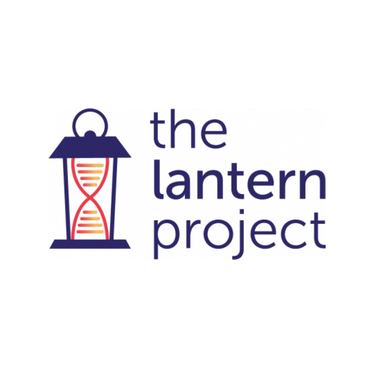Program eligibility
The Lantern Project* offers two approaches to diagnosing MPS I: directed testing of α-L-iduronidase enzyme assay and IDUA sequencing, or testing for 7 MPS disorders via an enzyme panel for patients with:
- Symptoms consistent with MPS I, or one of the other MPS disorders
- Presumptive positive newborn screen for MPS I
*This testing program is not appropriate for carrier testing as enzyme assay will not reliably detect carriers
About the test
Testing algorithm:
Patients suspected of having MPS I:
- α-L-iduronidase will be assayed and if deficient will reflex to:
- IDUA sequencing analysis (with copy number variant analysis if needed)
- If either enzyme assay or IDUA sequencing has already been performed, these tests can be ordered individually.
Patients suspected of having an unspecified MPS disorder
- MPS 7 enzyme panel. If α-L-iduronidase is deficient will reflex to:
- IDUA sequencing analysis (with copy number variant analysis if needed)
Sample requirements
α-L-iduronidase and 7-Plex enzyme asays
- Dried blood spots are preferred, but whole blood (EDTA) is also acceptable.
IDUA Gene sequencing
- Dried blood spots (DBS) are preferred, but whole blood (EDTA) is also acceptable. A saliva sample can be used if only gene sequencing is being ordered.
Bundled testing (Enzyme assay with reflex to sequencing)
- Dried blood spots (DBS) are preferred, but whole blood (EDTA) is also acceptable. A saliva sample cannot be used for enzyme assay.
Methodology
Enzyme aassay
- α-L-iduronidase activity is measured on dried blood spots (DBS) via Flow Injection Tandem Mass Spectrometry (FIA/MS/MS).
- Enzyme activity is measured on dried blood spots (DBS) via Flow Injection Tandem Mass Spectrometry (FIA/MS/MS) for the following analytes:
- MPS I, Hurler, Hurler-Scheie, and Scheie syndrome (α-iduronidase)
- MPS II, Hunter syndrome (Iduronate-2-sulfatase)
- MPS IIIB, Sanfilippo syndrome (α -N-acetylglucosaminidase)
- MPS IVA, Morquio syndrome, type A (N-acetyl galactosamine-6-sulfatase)
- MPS IVB, GM1 Gangliosidosis (β-galactosidase)
- MPS VI, Maroteaux-Lamy syndrome (Arylsulfatase B)
- MPS VII, Sly syndrome (β-glucuronidase)
Gene sequencing assay
- IDUA sequencing is performed using NGS and analysis of all coding exons and 10bp of flanking intronic regions. This assay cannot detect variants in regions of the exome that are not covered, such as deep intronic, promoter, and enhancer regions, or areas containing large numbers of tandem repeats. Copy number variation (CNV) of three exons or more is reported. Single exon CNVs can also be predicted, but reported after follow-up confirmation is performed.
Turn-Around-Times (TAT)
α-L-iduronidase and 7-Plex enzyme assays: 3 days
IDUA gene sequencing: 3 weeks
References
1. Arn P, Wraith J, Underhill L. Characterization of surgical procedures in patients with mucopolysaccharidosis type I: findings from the MPS I Registry. J Pediatr 2009; 154:859-64 e3.
2. Clarke LA. Mucopolysaccharidosis type 1. NCBI Bookshelf, a service of the National Library of Medicine, National Institutes of Health (NIH). Available at: https://www.ncbi.nlm.nih.gov/books/NBK1162/. Accessed July 20, 2018.
3. Beck M, Arn P, Giugliani R, et al. The natural history of MPS I: global perspectives from the MPS I Registry. Genet in Med. 2014;16(10):759.
4. Tomatsu S et al Newborn screening and diagnosis of mucopolysaccharidoses Mol Genet Metab. 2013 Sep-Oct; 110(0): 42–53.
How to order
Step 1
Test selection and place order
Step 2
Specimen collection and shipment
Step 3
Get results
How to order
1. Test selection and place order
Select the correct test for your patient, and fill out The Lantern Project requisition form.
- Please make sure that all sections are completed, and that the patient has signed the informed consent form.
2. Specimen collection and shipment
- Obtain a sample for testing from the patient using one of the provided Revvity Omics test packs. If you do not have a kit available in your office, please contact us here and we can have one sent out to your office.
- Ensure that the patient sample is labeled with the patient’s name and date of birth.
- Please note that all biochemical assays require a dried blood spot sample or whole blood. Step-by-step instructions for collecting a sample can be found here.
- Samples may be submitted without a collection kit by following the guidelines for specimen requirements and completing the requisition form.
- Package the patient sample, informed consent form, and test requisition form back into the test kit, and utilize the included pre-paid shipping label to return the kit to Revvity Omics for processing.
- As a patient’s clinical presentation is an essential part of fully interpreting genetic test results, we ask that you kindly include any applicable medical records or clinical notes with the sample at the time of test submission.
3. Get results
Once Revvity Omics receives the sample, you will receive phone call to report abnormal findings, with a written report to follow within the established turnaround time for the ordered test. Bundled tests will be reported together in one comprehensive result.
This testing service has not been cleared or approved by the U.S. Food and Drug Administration. Testing services may not be licensed in accordance with the laws in all countries. The availability of specific test offerings is dependent upon laboratory location. The content on this page is provided for informational purposes only, not as medical advice. It is not intended to substitute the consultation, diagnosis, and/or treatment provided by a qualified licensed physician or other medical professionals.




























